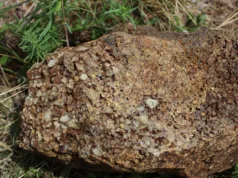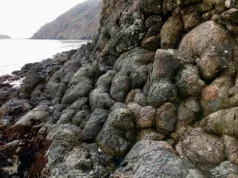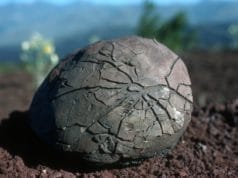Phonolite is a type of volcanic rock that belongs to the family of igneous rocks. It is characterized by its unique mineral composition and texture, which set it apart from other volcanic rocks. The name “phonolite” is derived from the Greek words “phōnē,” meaning sound, and “lithos,” meaning stone, highlighting one of its distinctive features.
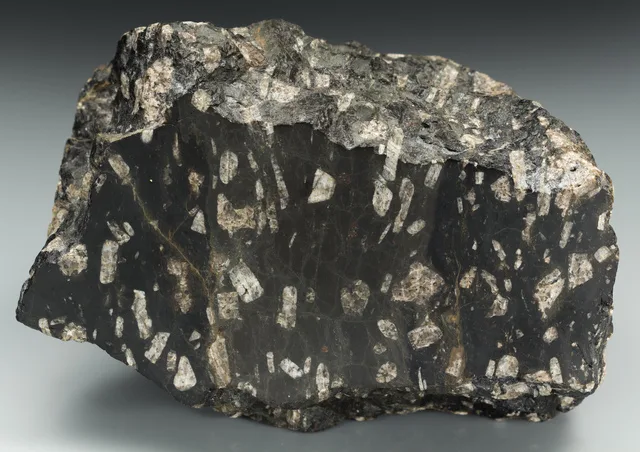
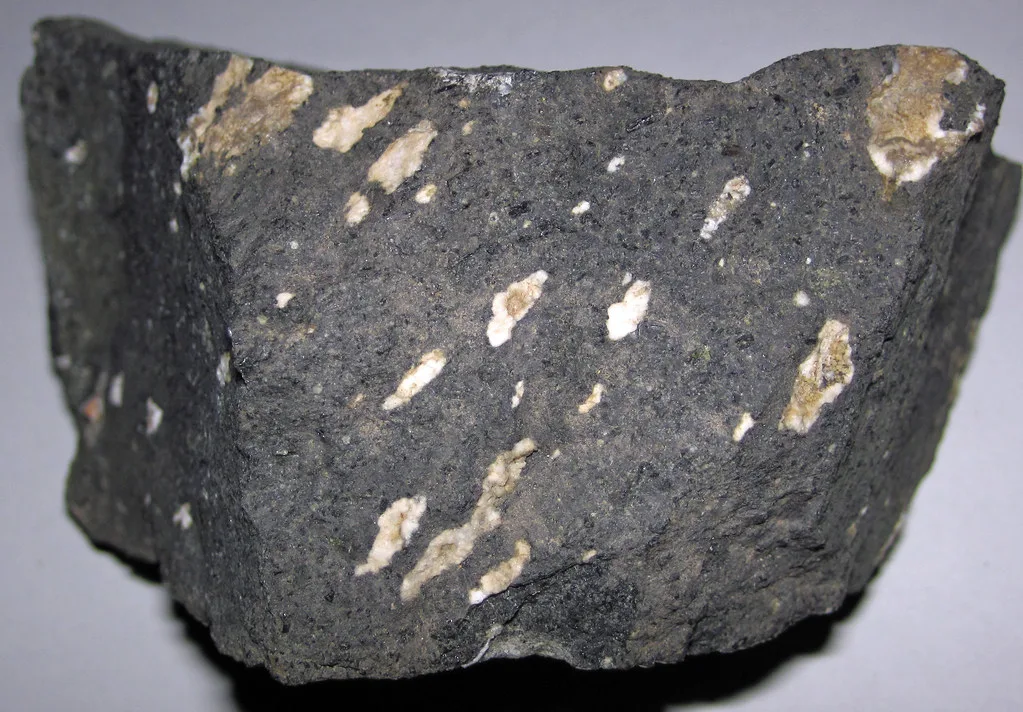
The key minerals found in phonolite include feldspar, nepheline, and alkali amphiboles. These minerals give phonolite its characteristic light color and contribute to its relatively low density. One notable aspect of phonolite is its ability to produce a ringing sound when struck, which is associated with its phonolitic texture. This acoustic property is a result of the high silica content and the specific arrangement of minerals in the rock.
Phonolite is typically associated with volcanic activity and is often found in volcanic regions around the world. It is commonly associated with alkaline volcanic rocks and is part of a larger group of rocks known as alkaline rocks. These rocks form under unique geological conditions and are characterized by the presence of minerals rich in alkali elements such as sodium and potassium.
The formation of phonolite is linked to specific magma compositions and conditions during volcanic activity. As magma rises towards the Earth’s surface, it undergoes various processes that lead to the crystallization of minerals, ultimately forming phonolite. The distinct mineralogy and physical properties of phonolite make it an interesting subject of study for geologists and researchers interested in understanding the Earth’s geological history.
In summary, phonolite is a volcanic rock with a unique mineral composition, light color, and an ability to produce a ringing sound when struck. Its formation is associated with specific volcanic conditions, and it is often found in alkaline volcanic regions around the world.
Petrology of Phonolite
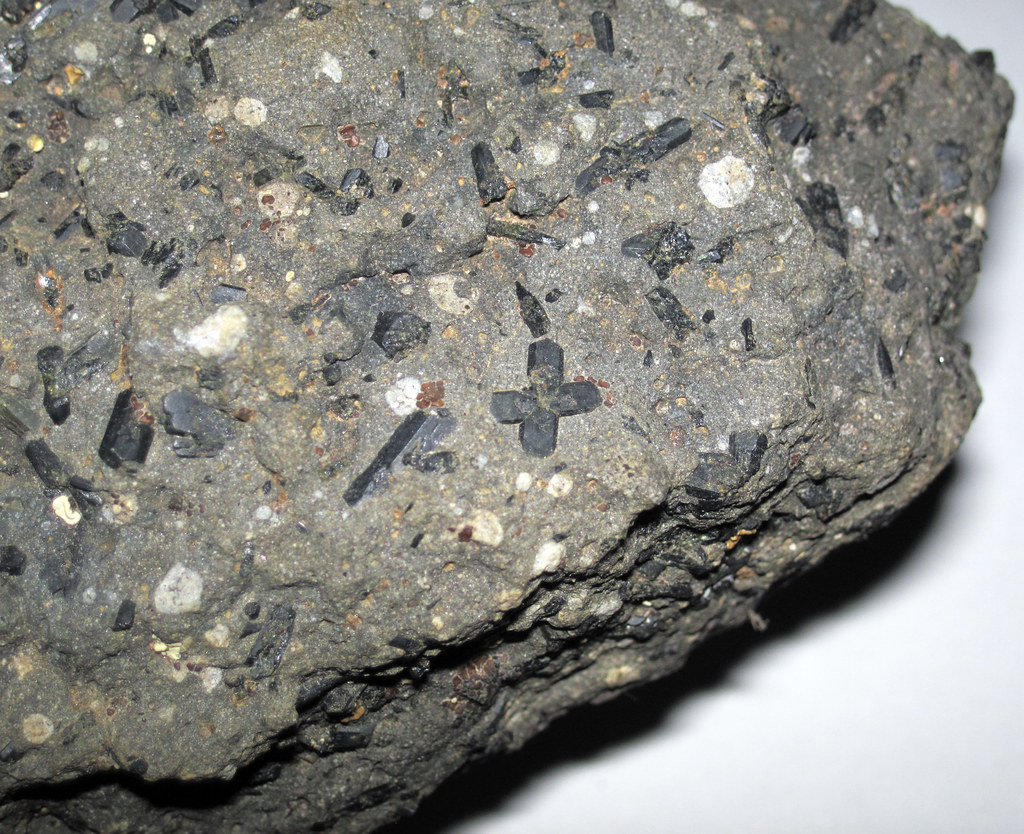
The petrology of phonolite involves the study of the composition, texture, and mineralogy of this specific type of volcanic rock. Understanding the petrological characteristics of phonolite provides insights into its formation processes, geological context, and the conditions under which it crystallizes. Here are some key aspects of the petrology of phonolite:
- Mineral Composition:
- Feldspar: Phonolite typically contains alkali feldspar as a major mineral component. This is often observed in the form of sanidine or anorthoclase.
- Nepheline: Another significant mineral in phonolite is nepheline. It is a member of the feldspathoid group and is essential for defining the rock as phonolite.
- Alkali Amphiboles: The presence of alkali amphiboles, such as arfvedsonite or aegerine, is common in phonolite. These minerals contribute to the overall mineralogy of the rock.
- Texture:
- Phonolitic Texture: Phonolite exhibits a specific texture known as a “phonolitic texture.” This texture is characterized by the interlocking arrangement of fine-grained crystals, giving the rock a homogeneous appearance. The term “phonolitic” is derived from the rock’s ability to produce a ringing sound when struck due to this texture.
- Color:
- Light Color: Phonolite is generally light in color, ranging from gray to light pink or beige. The light color is a result of the dominance of minerals like feldspar and nepheline, which are typically light-colored minerals.
- Accessory Minerals:
- Geochemical Characteristics:
- Phonolites are often associated with alkaline magmatism and are part of the broader group of alkaline rocks. Geochemical studies help researchers understand the source of magmas, the processes involved in their formation, and the tectonic settings where phonolites are likely to occur.
- Formation Conditions:
- Phonolites typically form under specific conditions of low pressure and relatively high temperatures. The magma from which phonolites crystallize is often enriched in alkali elements like sodium and potassium.
Understanding the petrology of phonolite contributes to our knowledge of volcanic processes, magma evolution, and the geological history of the areas where these rocks are found. Petrological studies often involve laboratory analysis, including thin section petrography, mineralogical analysis, and geochemical investigations.
Geological Context Formation Processes
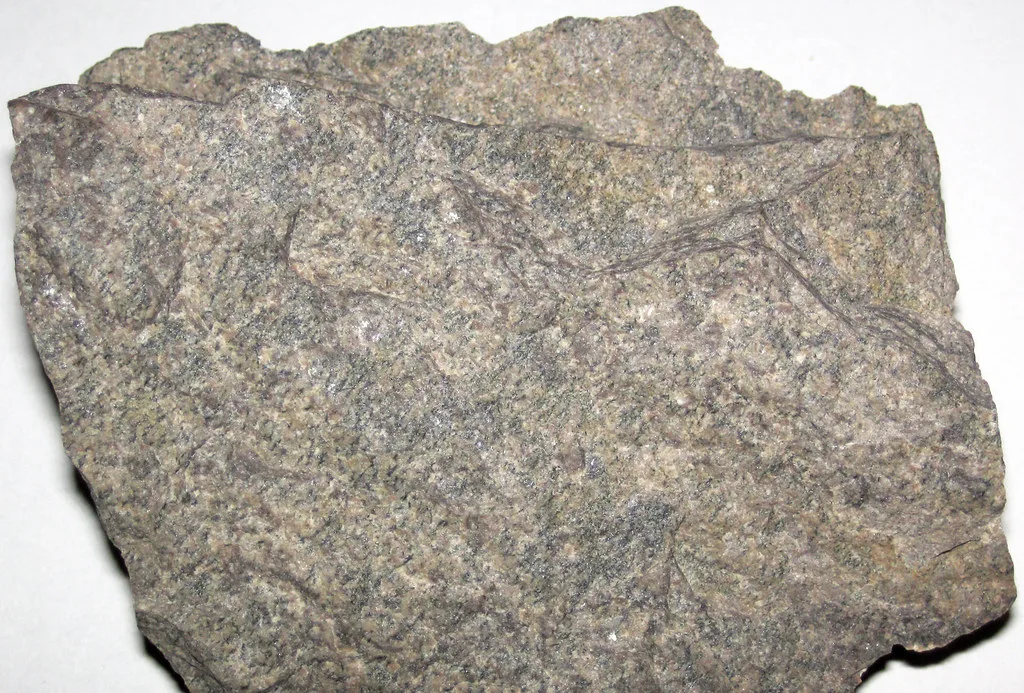
Phonolites are generally associated with specific geological contexts and form through distinct processes. Understanding the geological context and formation processes provides insights into the conditions under which phonolites develop. Here are key aspects of the geological context and formation processes of phonolites:
- Tectonic Setting:
- Phonolites are often associated with alkaline magmatism, and their occurrence is linked to specific tectonic settings. They are commonly found in intraplate or rift-related settings rather than at convergent plate boundaries.
- Magma Source:
- The magma from which phonolites originate is typically enriched in alkali elements, such as sodium and potassium. This enrichment is associated with mantle sources that have undergone specific degrees of partial melting.
- Fractional Crystallization:
- Phonolites form through the process of fractional crystallization. As magma rises towards the Earth’s surface, it undergoes cooling and differentiation. Certain minerals, such as feldspar and nepheline, crystallize out of the magma as it cools, leading to the formation of the phonolite rock.
- Low Pressure-High Temperature Conditions:
- Phonolites are known to form under conditions of low pressure and relatively high temperatures. These conditions are often associated with magma ascent in volcanic systems. The specific mineralogy of phonolites, including the presence of alkali feldspar and nepheline, is characteristic of these particular formation conditions.
- Volcanic Settings:
- Phonolites are commonly associated with volcanic activity. They can be found in volcanic complexes, especially those with alkaline volcanic rocks. Phonolitic lavas and pyroclastic deposits contribute to the geological features of these volcanic regions.
- Intraplate Magmatism:
- Phonolites are often linked to intraplate magmatism, occurring away from plate boundaries. This type of magmatism is associated with hotspots, mantle plumes, or rifting processes, where the mantle undergoes partial melting, leading to the generation of alkaline magmas.
- Assimilation and Mixing:
- In some cases, phonolite magmas may undergo assimilation of surrounding rocks or mixing with other magmas, influencing their composition and leading to variations in mineralogy.
- Regional Geology:
- The regional geology of an area plays a crucial role in the occurrence of phonolites. The presence of specific rock types, geological structures, and tectonic history can influence the formation and emplacement of phonolitic magmas.
Studying the geological context and formation processes of phonolites contributes to a broader understanding of magmatic systems, volcanic activity, and the Earth’s crustal dynamics. It also aids in the identification of specific geological settings where phonolites are likely to be found.
Geological Occurrence
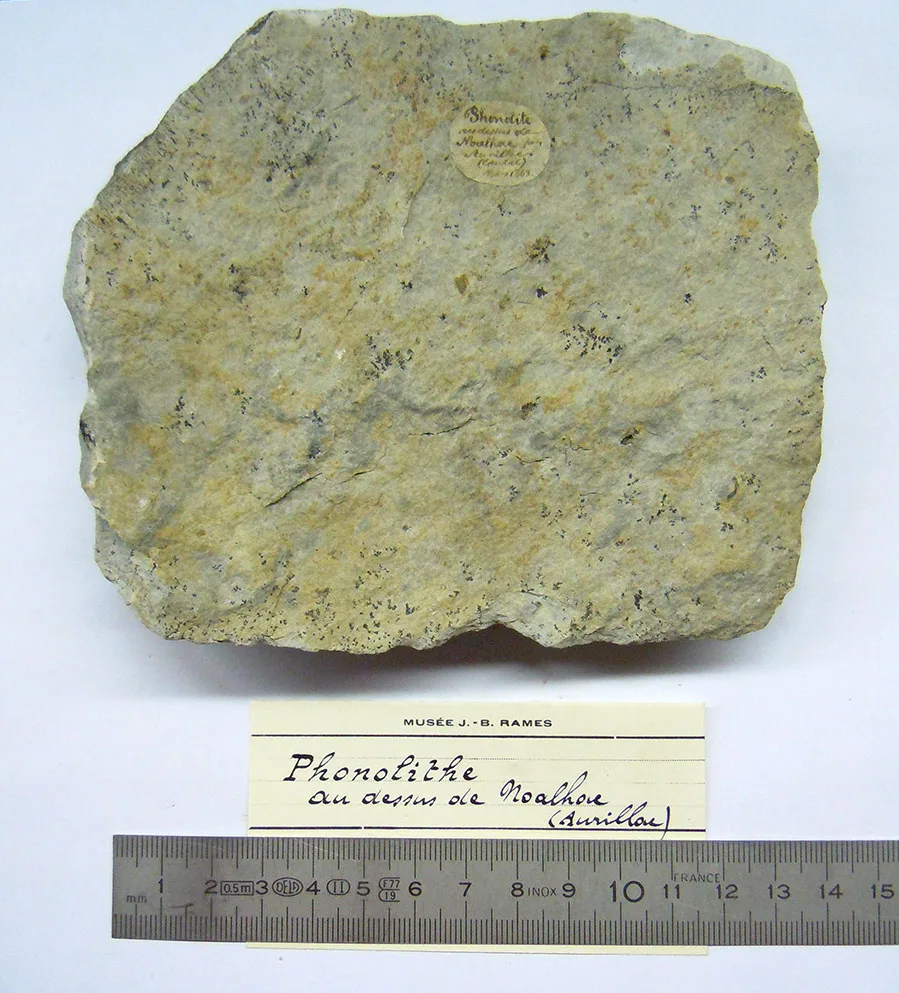
Phonolites are commonly associated with alkaline volcanic and intrusive complexes. They are often found in regions characterized by intraplate magmatism, away from tectonic plate boundaries. The occurrence of phonolites is linked to specific geological processes, including mantle melting, fractional crystallization, and magma ascent. These rocks can be part of larger volcanic systems or form intrusive bodies.
Tectonic Settings:
Phonolites are typically associated with the following tectonic settings:
- Intraplate Settings: Phonolites are often found in regions away from plate boundaries, where intraplate magmatism occurs. This can be related to mantle plumes, hotspots, or rift-related processes.
- Rift Zones: Phonolites are sometimes associated with continental rift zones where the Earth’s lithosphere is undergoing extension and thinning. Rift-related magmatism can lead to the generation of phonolitic magmas.
Global Distribution:
Phonolites are found in various parts of the world, and their distribution is associated with specific geological features and tectonic settings. Some regions with notable occurrences of phonolites include:
- East African Rift: The East African Rift is known for its volcanic activity, and phonolites can be found in this region, along with other alkaline volcanic rocks.
- Colorado Plateau, USA: Phonolites occur in the southwestern United States, particularly in the Colorado Plateau region. These rocks are associated with intraplate magmatism.
- Cape Verde Islands: Phonolites are found in the volcanic islands of Cape Verde off the coast of West Africa. The archipelago exhibits a range of alkaline volcanic rocks.
- Kola Peninsula, Russia: The Kola Peninsula in Russia is known for alkaline igneous rocks, including phonolites. These rocks are associated with the Khibiny and Lovozero alkaline massifs.
- Ol Doinyo Lengai, Tanzania: This stratovolcano in Tanzania is known for its unique phonolitic lavas. Ol Doinyo Lengai is one of the few active volcanoes where natrocarbonatite lavas, a type of phonolite, erupt.
Specific Phonolite Deposits:
While phonolites are found in various regions globally, specific deposits or occurrences may be notable for their geological features or mineralogical characteristics. Examples include:
- Coso Volcanic Field, USA: This volcanic field in California is known for its phonolitic lava domes, which are part of a larger complex of alkaline volcanic rocks.
- Eldoinyo Kengai, Kenya: This area in Kenya is known for phonolitic lavas associated with volcanic activity.
- Igneous Complex of Magnet Cove, USA: The Magnet Cove area in Arkansas is known for an igneous complex that includes phonolites among other rock types.
- Kanaga Volcano, USA: Located in the Aleutian Islands of Alaska, Kanaga Volcano is associated with phonolite flows.
It’s important to note that the geological occurrence of phonolites is diverse, and their distribution is influenced by the specific geological history of each region. Researchers and geologists continue to study these rocks to gain insights into Earth’s magmatic processes and history.
Geochemistry of Phonolite
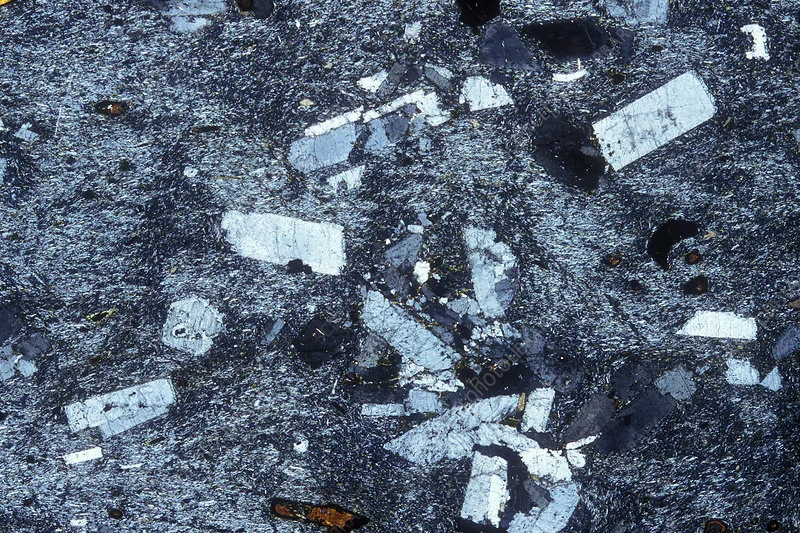
The geochemistry of phonolite involves the study of the chemical composition of this specific type of volcanic rock. Understanding the geochemistry of phonolite provides insights into its origin, magma evolution, and the geological processes that lead to its formation. Here are key aspects of the geochemistry of phonolite:
- Major Elements:
- Silica Content: Phonolites generally have a moderate to high silica content, typically falling within the intermediate to felsic range. This contributes to their light color and distinguishes them from more mafic volcanic rocks.
- Alkali Elements: Phonolites are characterized by elevated concentrations of alkali elements, including potassium (K) and sodium (Na). Alkali feldspar and nepheline are the primary minerals responsible for these enrichments.
- Mineralogy and Petrology:
- The mineralogical composition of phonolite, including the presence of alkali feldspar, nepheline, and alkali amphiboles, is a key aspect of its geochemistry. These minerals collectively contribute to the overall chemical signature of the rock.
- Trace Elements:
- Rare Earth Elements (REE): Phonolites often display enrichment in certain rare earth elements, including elements like lanthanum (La), cerium (Ce), and neodymium (Nd). The distribution of REEs can provide information about the source of the magma and the processes involved in its formation.
- Barium (Ba) and Strontium (Sr): Phonolites may show variable concentrations of barium and strontium, which can be indicative of interactions with crustal rocks or assimilation processes.
- Isotopic Signatures:
- Sr, Nd, and Pb Isotopes: The isotopic composition of strontium (Sr), neodymium (Nd), and lead (Pb) in phonolites can provide insights into the source of the magma and crustal involvement. Isotope ratios are often used to trace the mantle source and potential crustal contamination.
- Magma Differentiation:
- The geochemistry of phonolite reflects the processes of magma differentiation, including fractional crystallization. As the magma cools and certain minerals crystallize, the remaining melt becomes enriched in certain elements, leading to the observed chemical composition of phonolite.
- Alkali-Rich Character:
- One of the defining features of phonolites is their alkali-rich character. The presence of minerals like nepheline, which is a feldspathoid with low silica content, contributes to the alkali-rich nature of these rocks.
- Geochemical Classification:
- Phonolites are classified as alkaline rocks, and their geochemical characteristics are often compared with other alkaline rock types, such as trachytes and syenites. The classification helps in understanding the broader geological context and tectonic setting in which phonolites form.
Understanding the geochemistry of phonolite involves detailed laboratory analyses, including chemical analysis of rock samples, mineralogical studies, and isotopic investigations. These studies contribute to our knowledge of magma genesis, crust-mantle interactions, and the Earth’s dynamic processes.
Economic Importance

Phonolites themselves are not typically of significant economic importance in the same way that certain other rocks or minerals might be. However, the areas where phonolites are found can sometimes host valuable mineral deposits or have geological features that are of economic interest. Here are some indirect ways in which phonolites may be associated with economic importance:
- Mineral Resources: The geological settings where phonolites occur may host mineral deposits of economic interest. For example, alkaline volcanic and intrusive complexes, where phonolites are found, can be associated with deposits of rare earth elements, niobium, tantalum, and other valuable minerals. Exploration in these areas might be driven by the potential for economic mineral resources.
- Geothermal Resources: Some areas with phonolites may have geothermal potential. The heat generated from volcanic activity can be harnessed for geothermal energy production, providing a sustainable and economic source of power.
- Tourism: Unique geological features associated with phonolites, such as volcanic landscapes and lava formations, can attract tourists. Well-known phonolite-rich areas might become geological or natural landmarks, contributing to local economies through tourism-related activities.
- Construction Materials: In some cases, phonolites themselves or associated rocks may be used as construction materials. For example, if a phonolite deposit is quarried, the extracted rock might be used for road construction, building materials, or as decorative stones.
It’s important to note that the economic importance of areas with phonolites is often more related to the broader geological context and the presence of valuable minerals rather than the phonolites themselves. Economic assessments in such regions would involve detailed geological surveys and exploration to identify and exploit any valuable resources.
Conclusion
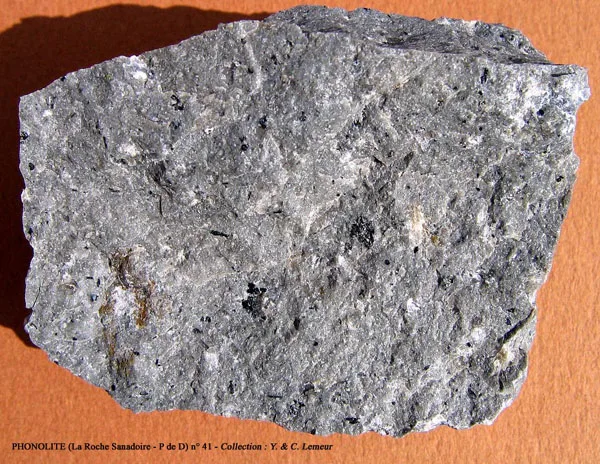
In summary, phonolite is a distinctive type of volcanic rock with unique mineralogical and geochemical characteristics. Its significance extends beyond its aesthetic properties and includes crucial contributions to our understanding of geological processes. Here are key points to summarize:
Key Points:
- Mineral Composition: Phonolites are primarily composed of alkali feldspar, nepheline, and alkali amphiboles, giving them a light color and distinctive mineralogy.
- Phonolitic Texture: The interlocking arrangement of fine-grained crystals gives rise to the phonolitic texture, allowing the rock to produce a ringing sound when struck.
- Tectonic Setting: Phonolites are associated with intraplate magmatism, often occurring away from tectonic plate boundaries. They are prevalent in volcanic complexes and rift zones.
- Geochemical Characteristics: Phonolites have a moderate to high silica content, elevated alkali elements (K, Na), and may exhibit enrichment in rare earth elements. Isotopic studies provide insights into magma sources and crustal interactions.
- Formation Processes: Phonolites form through fractional crystallization in magma chambers, under low-pressure, high-temperature conditions. They are part of alkaline volcanic systems.
- Global Distribution: Phonolites are found in various regions worldwide, including the East African Rift, the Colorado Plateau in the USA, the Cape Verde Islands, the Kola Peninsula in Russia, and others.
- Economic Importance: While phonolites themselves are not typically economically valuable, the areas where they are found may host mineral resources, geothermal potential, or become tourist attractions, contributing to local economies.
Significance in Geological and Environmental Contexts:
- Geological Understanding: Phonolites provide insights into magmatic processes, magma differentiation, and the geological history of specific regions. Their study contributes to a broader understanding of Earth’s crustal dynamics.
- Mineral Exploration: Regions with phonolites may be targeted for mineral exploration, as alkaline volcanic and intrusive complexes can host valuable mineral deposits such as rare earth elements, niobium, and tantalum.
- Geothermal Potential: Areas with phonolites may have geothermal potential, offering a sustainable and environmentally friendly source of energy.
- Tourism and Education: The unique geological features associated with phonolites, such as volcanic landscapes, can attract tourists and serve as educational tools, fostering an appreciation for Earth’s geological diversity.
In conclusion, the study of phonolite contributes not only to scientific knowledge but also to practical applications in mineral exploration, energy production, and the promotion of geological tourism. Understanding the geological and environmental contexts of phonolites enhances our comprehension of Earth’s dynamic processes and resources.


























